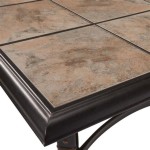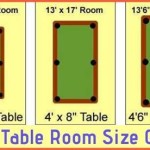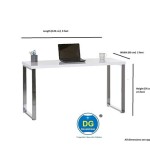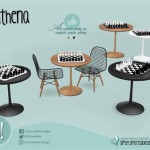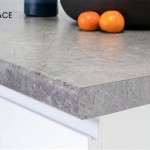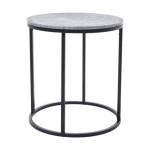Simple Dining Table Design for Small Spaces
In contemporary living, spatial efficiency is a paramount concern, particularly in urban environments where living spaces are often compact. The dining table, a central piece for social engagement and daily sustenance, can pose a significant challenge in small spaces. The design of a dining table for a small space, therefore, requires careful consideration of functionality, aesthetics, and space optimization. This article explores various design strategies for simple dining tables that maximize utility without compromising style in confined environments.
The fundamental principle underlying small-space dining table design is adaptability. A static, bulky table can quickly overwhelm a limited area, making it crucial to select designs that can be easily adjusted or reconfigured as needed. Multifunctionality is also key; the table should ideally serve purposes beyond dining, such as a workspace or a surface for hobbies and crafts. Materials, dimensions, and overall form must be deliberately chosen to contribute to a sense of openness and lightness within the space.
Folding and Drop-Leaf Tables: Maximizing Flexibility
Folding tables and drop-leaf tables are quintessential examples of space-saving furniture. These designs allow the table surface area to be altered according to the number of users. A folding table can be completely collapsed and stored away when not in use, freeing up valuable floor space. Drop-leaf tables, characterized by hinged leaves that can be raised or lowered, offer a more permanent solution that still provides flexibility. When only one or two people are dining, one or both leaves can be folded down, reducing the table's footprint considerably. For larger gatherings, the leaves can be extended to accommodate more diners.
The mechanism of folding and drop-leaf tables is critical to their functionality. Sturdy hinges and reliable locking mechanisms are essential for ensuring the table's stability when extended. The ease of operation is also a factor to consider. A well-designed folding or drop-leaf table should be easy to set up and take down, without requiring excessive effort or specialized tools. Materials used in the construction of these tables should be durable and lightweight, facilitating easy movement and storage. Wood, metal, and engineered wood composites are common choices, each offering different aesthetic and performance characteristics.
Aesthetic considerations for folding and drop-leaf tables are also important. While functionality is paramount, the table should still complement the overall design of the room. Simple, clean lines are often preferred, as they contribute to a sense of spaciousness and prevent the table from appearing visually cluttered. Neutral colors and minimalist designs can further enhance this effect. Integrating storage compartments or shelves into the table design can provide additional utility, allowing it to serve as both a dining surface and a storage unit.
Round and Oval Tables: Optimizing Space Utilization
In small, square or rectangular rooms, a round or oval dining table can offer significant advantages over traditional rectangular designs. The absence of corners allows for easier movement around the table, maximizing the usable space within the room. Round tables also promote a more intimate and conversational dining experience, as all diners are equidistant from one another.
The diameter of a round table should be carefully chosen to suit the size of the room and the number of users. A small round table, with a diameter of approximately 36 inches, can comfortably accommodate two to four people. Larger round tables, with diameters of 48 inches or more, can seat up to six people. It is important to leave sufficient space around the table for chairs and movement. A minimum of 24 inches of clearance between the table edge and any walls or other furniture is generally recommended.
Oval tables offer a compromise between the space-saving benefits of round tables and the seating capacity of rectangular tables. The elongated shape of an oval tables allows for more diners to be seated without compromising the flow of movement around the table. Oval tables are particularly well-suited for narrow rooms, where a rectangular table might feel too restrictive. The choice between a round and an oval table ultimately depends on the specific dimensions of the room and the desired aesthetic.
Materials for round and oval tables are diverse, ranging from solid wood to glass and metal. Glass-topped tables can create a sense of lightness and openness, allowing light to pass through and making the room feel larger. Wooden tables offer warmth and character, while metal tables provide a modern and industrial aesthetic. The choice of material should be guided by the overall design of the room and the desired level of durability and maintenance.
Wall-Mounted and Convertible Tables: Innovative Solutions for Limited Space
For extremely small spaces, wall-mounted and convertible tables offer innovative solutions that maximize space utilization. Wall-mounted tables can be folded down from the wall when needed and folded back up when not in use, freeing up floor space completely. Convertible tables, such as those that can be transformed from a coffee table into a dining table, provide dual functionality, allowing them to serve multiple purposes within a single space.
Wall-mounted tables are particularly well-suited for studio apartments or small kitchens where space is at a premium. These tables typically consist of a hinged tabletop that is attached to a wall-mounted support structure. The support structure may include legs that fold down for added stability or a cantilevered design that relies on the strength of the wall attachment. The weight capacity of the wall-mounted table is crucial. It must be sufficiently strong to support the weight of the tabletop and any items placed on it.
Convertible tables offer a versatile solution for individuals who frequently entertain guests but lack the space for a dedicated dining table. These tables can be easily transformed from a low coffee table into a taller dining table, providing a comfortable seating height for dining. Some convertible tables also feature extending tabletops that can accommodate more diners. The transformation mechanism should be smooth and easy to operate, without requiring excessive effort or specialized tools.
The aesthetics of wall-mounted and convertible tables are just as important as their functionality. These tables should be designed to complement the overall design of the room, whether it is modern, traditional, or eclectic. Simple, minimalist designs are often preferred, as they contribute to a sense of spaciousness and prevent the table from appearing visually cluttered. The choice of materials and colors should be carefully considered to ensure that the table blends seamlessly with the surrounding decor.
Beyond the specific types of tables, several broader design considerations can contribute to the effectiveness of a dining table in a small space. Light colors, for example, tend to make a room feel larger and more open. Conversely, dark colors can make a room feel smaller and more enclosed. The use of mirrors can also create the illusion of more space, as they reflect light and visually expand the room. Careful consideration should be given to the lighting in the dining area as well. Adequate lighting can make the space feel more inviting and comfortable, even if it is small.
Chair selection is another crucial aspect of small-space dining table design. Chairs should be chosen to be both comfortable and space-efficient. Chairs that can be stacked or folded away when not in use are ideal for maximizing floor space. Transparent or light-colored chairs can also help to create a sense of openness and prevent the dining area from feeling too cluttered. The height of the chairs should be appropriate for the height of the table, ensuring a comfortable dining experience.
In conclusion, designing a simple dining table for a small space involves a careful balance of functionality, aesthetics, and space optimization. Folding and drop-leaf tables, round and oval tables, and wall-mounted and convertible tables each offer unique advantages for maximizing space utilization. Careful consideration of materials, dimensions, and overall form is essential for creating a dining area that is both functional and stylish. By following these design strategies, individuals can create a comfortable and inviting dining space, even in the most compact of living environments.

Twenty Dining Tables That Work Great In Small Spaces Living A Shoebox Room Table Round Sets Space Saving

51 Small Dining Tables To Save Space Without Sacrificing Style

Gezen Rectangle Simple Dining Table 47 Small Space Home Breakfast Kitchen Oak Com

Modern Minimalist Marble Dining Table

13 Small Dining Room Ideas And Decorating Tricks

Beauty Marble Simple Small Dining Room Restaurant Round Table With Chair China Modern Made In Com

Dining Room Designs For Small Spaces Designcafe

Nordic Dining Table Home Small Apartment Modern Simple 0543 China Long Made In Com

13 Small Dining Room Ideas And Decorating Tricks

51 Small Dining Tables To Save Space Without Sacrificing Style

